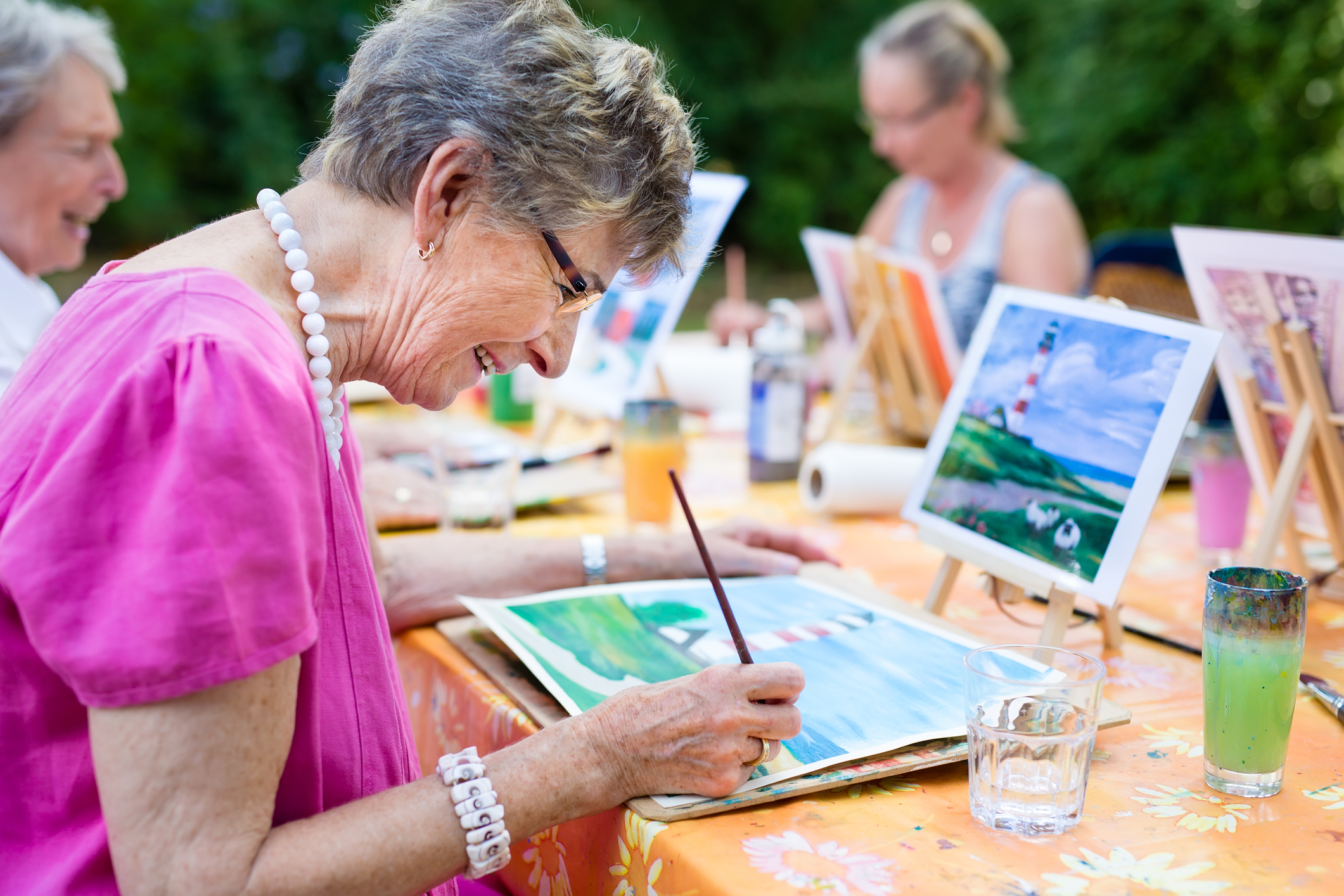As children, we are encouraged to be creative; to make music and dance and paint and imagine. But as we age most people find themselves letting go of their creativity for more practical matters; paying the bills, feeding a family and being responsible. In older age when some of these responsibilities may lessen, seniors have an opportunity to rediscover their artistic nature or try something completely new. And recent research has found that using music, literature, theatre or visual arts to share information and emotions can help promote healthy aging.
According to a recent McMaster University Optimal Aging Portal blog, utilizing the arts to help older adults express themselves and share their knowledge has a number of benefits for health and well-being. Storytelling through various artistic mediums can also address ageism and help others better understand the lives of older adults. Many seniors face social isolation, chronic illness, frailty, grief or dementia and creating art can give older adults a vehicle to express themselves to family, caregivers or health care professionals.
Encouraging creativity and self-expression can improve the quality of life for older adults and research has found that participating in artistic activities can engage the brain, creating new neural connections. Taking a group art class or joining a community theatre group not only provides older adults with a means of contributing to their communities, but the social interaction also improves overall well-being. Seniors who are active in the arts report less medication use, fewer doctor visits, less loneliness and increased activity levels, according to the Creativity and Aging Study by the Arts Health Network Canada.
Learn more about creative aging, resources for caregivers or artists and how to get more involved by following this link to the National Center for Creative Aging.
Art enables us to find ourselves and lose ourselves at the same time. Thomas Merton






Add Your Voice
0 Comments
Join the Discussion